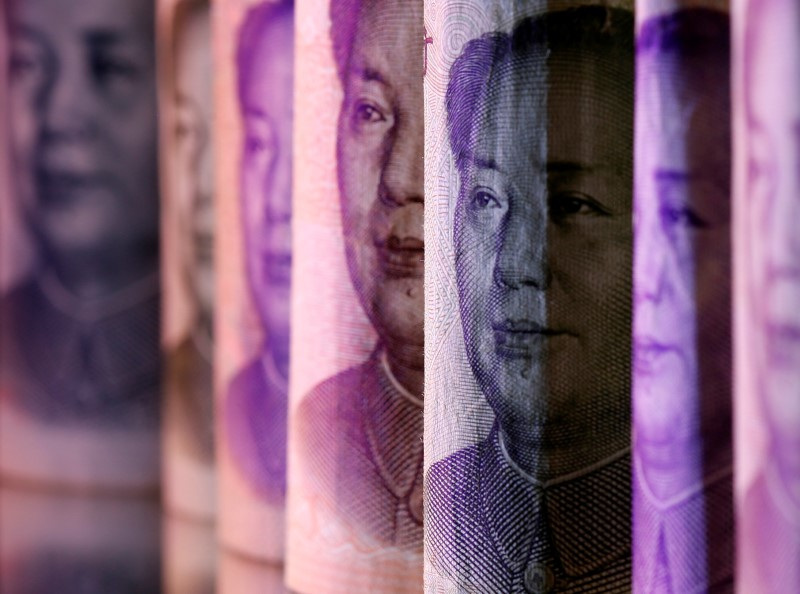SHANGHAI (Reuters) – A long, frenzied bond rally in China has stalled, with prices falling and sales slumping as investors step back after intensified interventions by Beijing to prevent interest rates from falling.
Ten-year Treasury futures are heading for a second straight weekly decline on Friday, which will mark the biggest two-week drop in almost a year, even as a series of gloomy economic indicators point to a slowing economy that would normally encourage more policy easing and buying bonds on one of the largest government bond markets in the world.
Exchange-traded bond funds in China saw a spike in outflows on several days of the week, as state-owned banks were big sellers and media affiliated with the People’s Bank of China reported that warnings against reckless buying were taking effect.
Some domestic asset management products that hold bonds have also fallen to discounts to net asset value. The price action signals that the market is gearing up for a battle with the authorities; only a slew of new bonds will be sold in the coming weeks and months.
“What we see here is a new round of PBOC action,” said Julio Callegari, chief investment officer for fixed income in Asia at JP Morgan Asset Management.
He has been unwinding a long position in Chinese government bonds for months, partly in response to the central bank’s rhetoric aimed at cooling the rally and because several months of solid bond issuance are expected.
“We are closer to neutral, our long positions are smaller,” he said, with a reasonable scenario in which rates would eventually stabilize.
Long-term bonds have been in focus over the past two weeks as China has highlighted the risks of an asset bubble and imposed restrictions on the duration of new bond funds and tightened supervision of bond trades by brokers and banks.
The 10-year yield rose almost ten basis points (bps) on Friday from last week’s record low, while the 30-year yield rose 8 basis points to 2.383%.
Interest rates rise when bond prices fall.
A week ago, the number of asset management products whose market value fell below net asset value rose to 385, the highest since March 2023, according to Zheshang Securities, and the market is showing other signs of deterioration.
Only 30.9 billion yuan ($4.3 billion) of China’s current 10-year bond traded interbank on Thursday, compared with an average daily volume of 122 billion yuan last week.
Zhao Jian, head of the Atlantis Finance Research Institute, said in comments on social media that the authorities’ measures to reverse falling interest rates in a weak economy are “unfathomable.”
While aimed at reducing risks, he said the measures would likely harm market function by making participants reluctant to trade, ultimately undermining its financing and investment purpose.
China will stick to supportive monetary policy and maintain policy stability, central bank Governor Pan Gongsheng said in an interview with state news agency Xinhua on Thursday.
VARIABILITY
China’s bond rally has been going on for years as pandemic lockdowns and a real estate market collapse stifled economic growth and the post-COVID recovery repeatedly disappointed, sending yields down and pushing up bond prices.
Bond market yields are higher than deposit rates, which attracts households. New bank lending is also at a 15-year low, meaning unused bank capital has also flowed into bonds.
The authorities have retreated, fearing a market bubble and diverting more and more money from productive use.
To be sure, none of these forces are weakening, leading to a deepening of the struggle between market participants and authorities.
The bond offering is another wildcard, as China had sold less than half of the combined 5.62 trillion yuan of local and government bonds it plans for this year by the end of July.
Ju Wang, head of Greater China currency and interest rate strategy at BNP Paribas (OTC:), also notes that foreigners attracted by lucrative swap rates may take the opportunity to book profits and close positions.
In a product release on Thursday, the Bank of Hangzhou’s asset management department said China’s weak economic recovery means interest rates will fall more easily than rise.

But the bank expects more volatility as interest rates are already low, and is preparing to “seize trading opportunities.”
($1 = 7.1730 renminbi)


